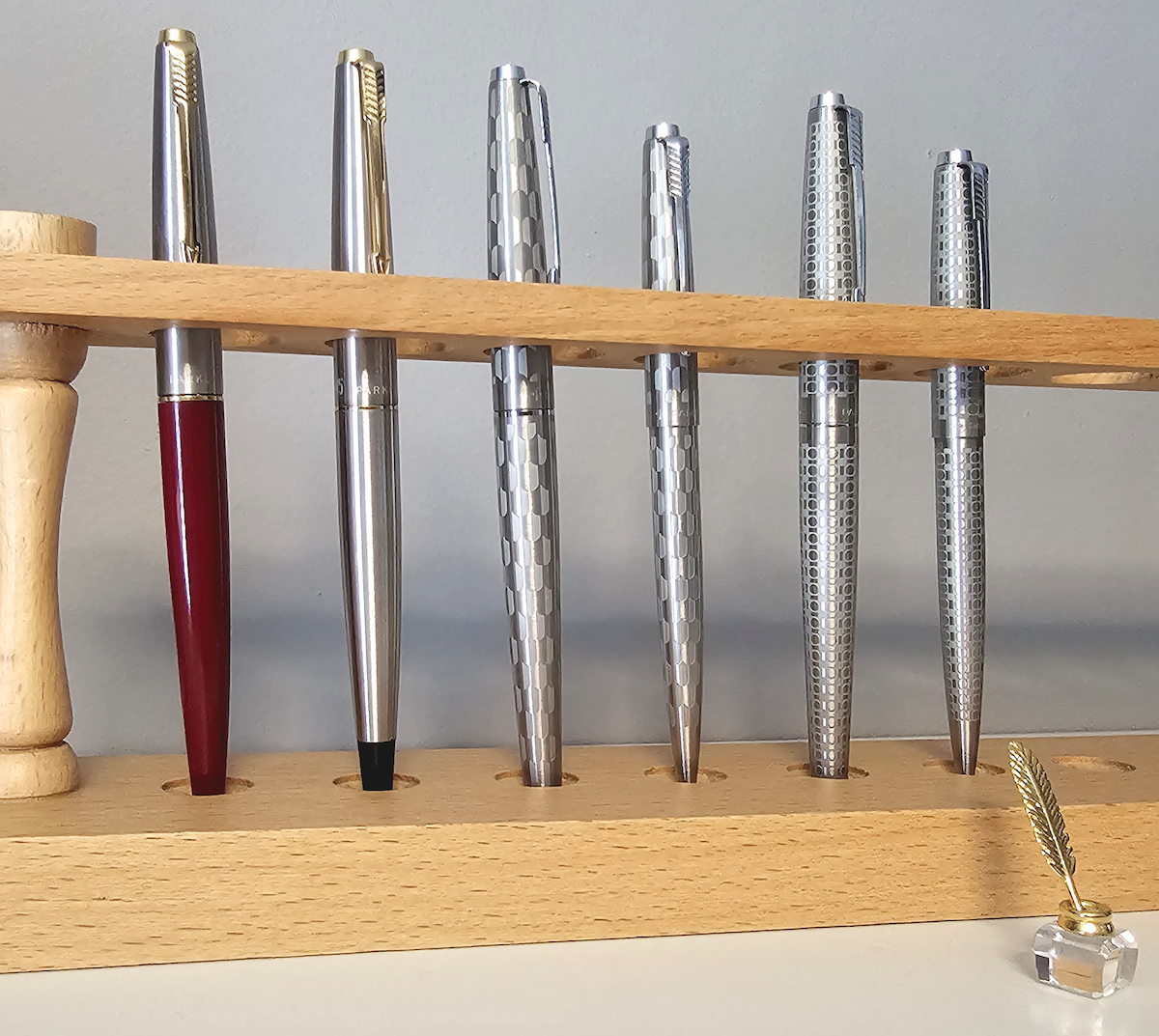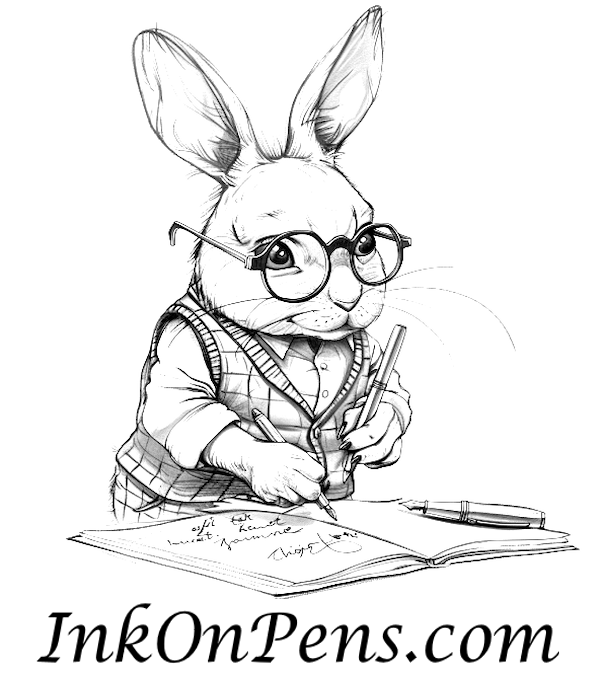
When Parker came out with the model 45, the USA was at a hopeful, exciting stage. Our attention was split between gunslingers of the Old West and rocket ships headed into space. With televisions replacing radios in our living rooms, we were excited to see clean, modern cartridges replacing inkwells, helping fountain pens compete with the new ball point pens that Parker was mass marketing in the US and England.
Named after the Colt 45, the Parker 45 line ultimately included ball points, pencils, and even felt tip pens with the same basic design. The 45 was easy to produce and became cheaper as it’s popularity grew. Soon it replaced bulk inked pens in schools and became the second most popular line at Parker, after the Jotter. Through the late 1960s, the fountain pen version held the top honors for best-selling fountain pen.

The Classic Parker fountain pen is made of colored plastic with a stainless cap and chrome trim. In the 1960s, most of them had a small, hooded 14k gold nib. The nib and feed would unscrew for quick and easy change out, and many tips were available, in both gold and stainless steel. In the picture above, some of the pens have gold trim, which was an upgrade which went the initials GT. There is also one pen across the top on the tray that has a stainless body, which was called a “Flighter”, because it was supposed to remind you of an airplane. Black, dark blue and burgundy were the most prevalent early colors, but grays and greens and lighter colors were available at various times. There are two olive and a teal pencil in the tray above.

The 45 was popular enough that many editions were made over the years. There were Harlequin designs, like those above, and brocade designs without clips, meant for ladies to carry in their purses. There were editions with gold caps and an Insignia version that was gold filled or gold plated. There were also downscale versions with plastic caps. Manufacture was mostly in the US and England early on, but to keep prices low, most production shifted to Argentina in the 1980s and 1990s. Production continued into the mid 2000s, and the venerable 45 had a forty-five year run.

I’ve used many 45’s, in gold and stainless nibs, in medium, fine, and extra-fine. All write reliably, and the 14k Fine is my favorite in this line. I have a burgundy GT with a Medium stainless nib that I use daily for jotting notes in Diamine Writer’s Blood ink. I also use the earlier pictured Flighter GT with a Fine 14k F nib for more serious writing projects. There isn’t much bounce in the gold nibs, but this isn’t meant to be a pen for creative lettering. It is for writing, very often with a black ink cartridge and some haste. Not that Parker 45s are everyday, ho-hum pens. They are versatile. They are workhorses. And they came in every variety then in use.

They started out as a great, inexpensive fountain pen. But the line expanded to ballpoints, mechanical pencils, steel nibs, high trims, low trims, school pens, felt tip pens, and roller balls through their forty-five years in the Parker catalog. In the picture above you see a black Coronet with gold trim, and orange felt tip in classic trim, a desk pen, steel nib pens (like the Richard Nixon White House pen) and three “Flighter” all-stainless pens with gold trim and black tassies, two that have 14k gold nibs, whereas the last one in the line was a felt tip (Touche II) I converted to roller ball.
And those are just the common varieties. The “fancy” versions, often made in England, were more varied and interesting. Below there are gold and silver “Lady Pen” models with no clips, but with very nice brocade finish. The gold model has teak ends and an extra fine gold nib. The teal ends on the silver one contrasts beautifully with the body of the pen. Next in the line up are four “Harlequin” models from 1980. They are the Circlet in fountain (steel stub nib, rage red section) and ballpoint, and then the Gray Shield in fountain (steel extra-fine nib, dark grat section) and ballpoint. Then the Insignia (or Signet) model in the 1960s version with gold fill, gold nib, and black tassie. Then some more varieties of the Flighter model with different trim.

Even with all of these models and varieties, there are several significant versions I am still missing, such as the Black Shield and Red Shield Harlequins, the various “Deluxe” versions with gold caps, five other colors of the Coronet, and the elusive TX, which has a blue lacquer body and cap. I’m also missing several body colors, like tan, Matador red, yellow, light blue, and pink. There was even a demonstrator version and many varieties of the all-plastic “Arrow” (or CT). And I don’t even know how many custom, jeweled 45s were made in Italy for the Italian market back in the 60s and 70s!
Okay, so why bother with an old, defunct pen at this point in life?
Well, for me, the Parker 45 is what came to represent a “real pen”, something we used in handwriting class, a pen my grandparents carried and had around their insurance office. They lived in desk drawers and were on display in stationery stores and department stores. The 45 was much bigger than the cheap little Jotter and it could take a cartridge. The brushed stainless caps are cool, and the gold trim (GT) even cooler. But more to the point, this cool pen is easy to find (dare I say ubiquitous?), performs well, and is an inexpensive way to include a gold-nib fountain pen in your Every Day Carry pouch or shirt pocket. Check out the writing samples below. Then run out and buy up a bevy of these beauties, before everyone else starts figuring out how far out they are.







